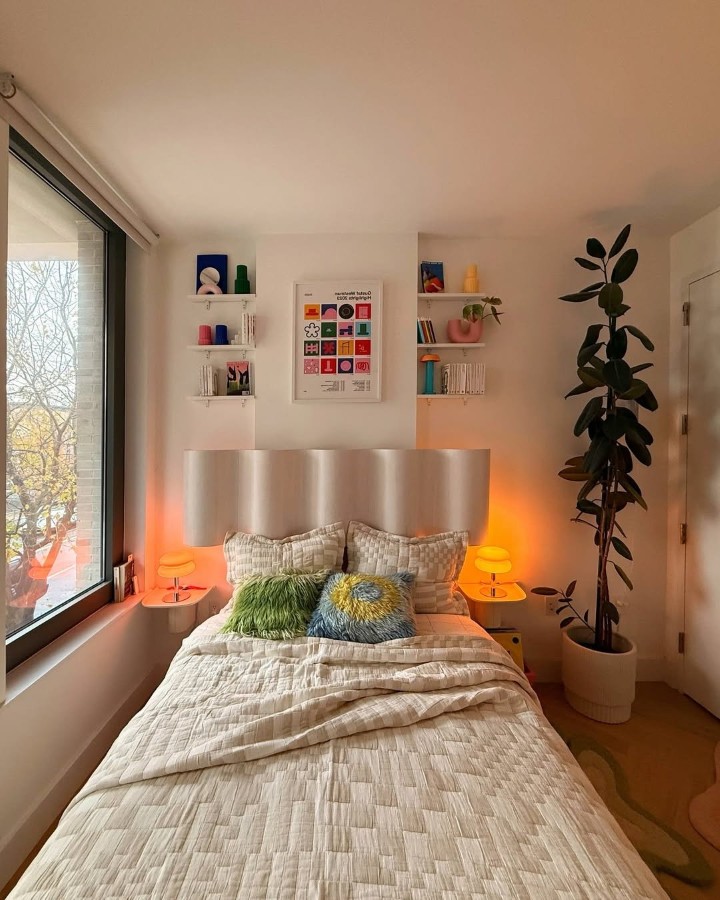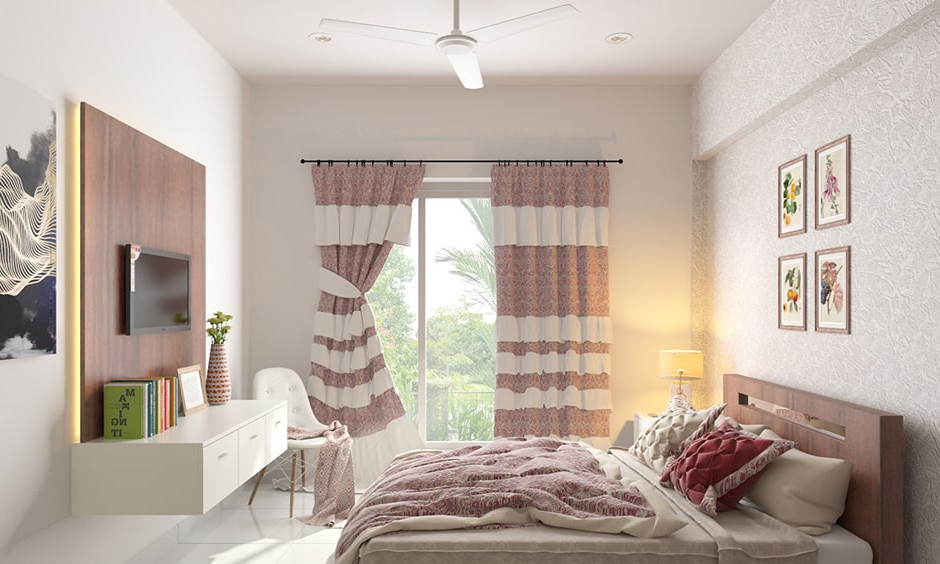When two people share a bedroom, every inch matters. Whether you’re working with a cramped studio or a converted attic space, finding the right balance between intimacy and independence can feel like solving a puzzle. What if we told you that thoughtful design could make all the difference? This isn’t just about fitting furniture in tight spots – it’s about creating a sanctuary where love and solitude can coexist.
Small bedrooms present unique challenges for couples. You’re not just designing for one person anymore – you’re crafting a space where two distinct personalities must find harmony. It’s easy to feel overwhelmed when faced with limited square footage and high expectations for comfort and privacy. But what if we told you that these constraints might actually lead to some of the most creative and meaningful solutions? The key lies in understanding that good design isn’t about maximizing space – it’s about maximizing intention. Every element should serve a purpose, whether it’s providing a quiet corner for reading or creating a visual barrier that allows for personal time. The journey from chaos to calm begins with recognizing that your bedroom is more than just a place to sleep – it’s a reflection of your relationship dynamics and personal needs.
Understanding Couple Dynamics in Small Spaces
Every couple has different needs when it comes to their sleeping quarters. Some prefer the intimacy of sharing everything, while others need designated areas for personal activities. The first step in successful small bedroom design is honest communication about what each partner values most. Consider how much alone time you each require versus how much togetherness you seek. Do you like to read before bed separately? Or do you prefer the warmth of shared stories? These seemingly simple preferences shape everything from furniture placement to lighting choices. Research shows that couples who plan their bedroom layout together report higher satisfaction levels with their sleeping environment. The goal isn’t to eliminate compromise – it’s to find creative ways to honor both partners’ needs. For instance, one partner might want a small desk area for work, while the other prefers a quiet spot for meditation. Both can exist in a compact space if approached thoughtfully.
Functional Furniture Solutions
The magic happens when furniture serves multiple purposes. A platform bed with built-in storage can hold everything from seasonal clothing to books, freeing up floor space. Consider ottomans that double as nightstands, or side tables that can transform into small desks. Modular furniture systems allow for flexibility as needs change over time. For example, a small dining table might become a workspace during the day and a reading surface at night. The key is choosing pieces that can adapt rather than simply fit. Built-in solutions are particularly effective because they disappear into the walls, leaving more usable space. Think about how often you’ll use each piece and what functions it needs to fulfill. A coffee table that doubles as a charging station or a vanity that also serves as a storage unit can dramatically improve usability. Don’t overlook the power of vertical space – tall shelving units or wall-mounted storage can keep essentials within reach without cluttering the floor.
Creating Visual Boundaries Without Walls
One of the biggest challenges in small bedrooms is maintaining privacy without feeling enclosed. Room dividers, whether freestanding or mounted, offer flexible solutions. They can define sleeping areas, create reading nooks, or separate workspaces from rest zones. Curtains and drapes provide soft separation that can be opened or closed depending on mood and need. Consider using sheer fabrics for daytime privacy while allowing natural light to flow through. Textured walls or accent colors can subtly distinguish different areas within the same room. For couples who value their individual space, a half-wall or screen might be the perfect compromise. These elements don’t have to be permanent – they can be moved or adjusted as relationships evolve. Sometimes the simplest solution works best: a bookshelf that acts as a partial divider or a large mirror that creates the illusion of more space while serving a practical function.
Lighting That Sets the Mood
Lighting plays a crucial role in defining different zones within a small bedroom. Layered lighting allows you to create various atmospheres throughout the day. Task lighting near reading areas ensures you won’t disturb your partner, while ambient lighting provides general illumination for daily activities. Consider dimmer switches that let you adjust brightness based on your needs. Table lamps and floor lamps offer flexibility, and bedside lighting should be positioned to avoid glare on screens or reading materials. Smart lighting systems can create different moods for relaxation, focus, or intimate moments. Different types of light affect our circadian rhythms, so choosing appropriate lighting can improve sleep quality. For couples who like to read separately, having independent lighting options means neither partner feels deprived. The beauty of good lighting is that it can make a small space feel larger and more welcoming. A single statement light fixture can anchor a room while providing functional illumination. Don’t forget that natural light is precious – position furniture to take advantage of morning sun or evening views.
Storage Strategies That Work for Two
Good organization prevents small spaces from feeling chaotic. The secret is to think vertically and horizontally, using every available surface. Under-bed storage containers can house seasonal items, while wall shelves keep frequently used books and decorations visible. Consider drawer organizers that maximize the space inside cabinets. Multi-functional furniture like beds with drawers or storage trunks helps maintain a clean appearance. Labeling systems ensure everyone knows where things belong, preventing the common issue of shared spaces becoming cluttered. For couples with different routines, consider separate storage areas that don’t interfere with each other. One partner might prefer to keep personal items in a dresser drawer, while another might want a dedicated shelf for professional materials. The key is establishing systems that feel fair and efficient. Regular decluttering sessions help maintain order, and having designated spots for everything prevents the accumulation of unnecessary items. Sometimes less really is more – the fewer items you have, the easier it is to maintain the space.
Personal Touches That Honor Individuality
A small bedroom can still feel uniquely personal for both partners. Display photos in ways that don’t overwhelm the space – perhaps in a small photo frame on a shelf or a shared wall gallery. Personal artwork or plants can add character without taking up valuable floor space. Consider having individual spaces for each person’s favorite items, even if they’re small. A partner’s favorite book might live on a small shelf, or a special mug could sit on a designated spot. These small touches make the space feel lived-in and meaningful. The goal isn’t to compete for attention but to create a harmony between individual preferences and shared experiences. Sometimes a single item – like a candle or a small plant – can make someone feel instantly at home. Creating a few special spots within the room helps each person feel valued and accommodated. It’s about celebrating what makes each person unique while building something beautiful together.
Designing a small bedroom for two is less about overcoming limitations and more about embracing creativity. When you approach the challenge with open communication and genuine care for each other’s needs, the results can be surprisingly satisfying. The most important thing isn’t having the most expensive furniture or the most elaborate design – it’s creating a space where both people feel comfortable being themselves. A well-designed small bedroom becomes a testament to partnership, showing that two different people can find perfect harmony in a shared space. Remember, the best designs aren’t always the most complex – sometimes they’re the most thoughtful. Every decision you make about layout, color, and function contributes to a story that’s uniquely yours. Whether you’re starting fresh or redesigning an existing space, keep in mind that good design is ultimately about making life easier and more enjoyable. Your bedroom should reflect not just your style, but your relationship. With patience, creativity, and mutual respect, even the smallest space can become your favorite place to rest and recharge.

















